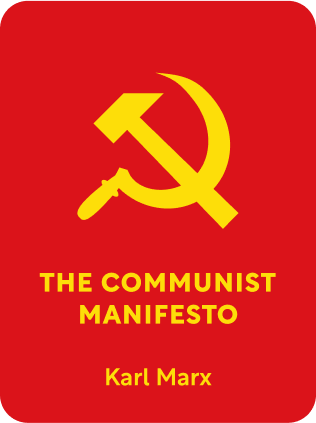

This article is an excerpt from the Shortform summary of "The Communist Manifesto" by Karl Marx. Shortform has the world's best summaries of books you should be reading.
Like this article? Sign up for a free trial here .
What are the different types of Socialism? Is socialism similar to Communism as they’re defined in The Communist Manifesto?
In The Communist Manifesto, the authors describe three types of socialism: reactionary, conservative/bourgeois, and critical-utopian. These definitions are meant to help characterize different types of people within a social system.
Read more about the 3 types of socialism described in The Communist Manifesto.
3 Types of Socialism
What are the three types of socialism? At the time of publication, the Manifesto of the Communist Party wouldn’t have been described as socialist. In 1848, Marx defines “socialists” as non-working class members who look for help from classes other than the ones they belong to. Socialists are interested in improving social conditions and they think it’s possible to do so by improving the existing political system, rather than through the total social change the Communists call for. While socialism of the time has some things in common with Communism, such as opposing the Bourgeoisie and supporting the Proletariat, its goals are different. The manifesto discusses three types of socialism: reactionary, conservative/bourgeois, and critical-utopian.
Reactionary Socialism
Reactionary socialism evolved as a response to the domination of the bourgeoisie class and its ruination of the other classes. There are three sub-types of socialism of this type.
- Feudal socialism. These socialists are French and English aristocrats. They oppose the Bourgeoisie because it took away their power and support the Proletariat because it’s the only class that can attack the Bourgeoisie. Politically, however, feudal socialists oppose the Proletariat because they don’t want revolution. They’re supported by clerical socialists, who spin Christianity to a socialist angle—helping the poor, providing charity, and so on.
- Petty bourgeois socialism. The petty bourgeoisie are made up of tradespeople and small business owners who evolved from peasant proprietors and medieval burgesses. Members of the petty bourgeoisie are constantly being pushed down into the Proletariat class because they can’t compete with the Bourgeoisie. Petty bourgeois socialism criticizes the Bourgeoisie for similar reasons as the Communists but proposes different solutions. Petty bourgeois socialism strives to either completely restore old social systems or reframe the current system using the old rules.
- German/“true” socialism. At the time of writing, the Bourgeoisie class isn’t yet fully developed in Germany. German socialism is composed of generalized ideas taken from French socialist literature. Since the “true” socialists haven’t actually experienced any conflict between the Proletariat and Bourgeoisie, unlike the French, the German philosophy is more about human interests in general than class struggle.
Conservative/Bourgeois Socialism
Conservative/bourgeois socialists are members of the Bourgeoisie who realize that the social system they’ve created is unstainable. However, they don’t want to do away with the two-class system, they simply want to do away with the revolutionary tendencies of the Proletariat. They do this by trying to appease some of the Proletariat’s social grievances or by trying to convince the Proletariat that they don’t need political reform, just better working and life conditions. These conditions would be achieved through administrative reform rather than revolution. This is one of the types of socialism.
Critical-Utopian Socialism (and Communism)
This school of thought developed when the Bourgeoisie and Proletariat were just starting to come into existence and the Bourgeoisie hadn’t created unsustainable conditions yet. Critical-utopian socialists aren’t interested in improving the lives of the Proletariat specifically; they’re interested in improving the lives of the most-suffering class, which in 1848 happens to be the Proletariat.
Critical-utopian socialists want to improve the lives of everyone, regardless of class, and to do so, they appeal to the ruling class. They don’t support revolutions and want to make small, peaceful strides instead—which will never work.
Their literature has some good criticisms of pre-1848 society, but it was written so early in the class struggle that it doesn’t have a strong handle on how the situation would develop.
So what are the 3 types of socialism? These three types can help you learn about socialism and communism.

———End of Preview———
Like what you just read? Read the rest of the world's best summary of Karl Marx's "The Communist Manifesto" at Shortform .
Here's what you'll find in our full The Communist Manifesto summary :
- How the oppressors and the oppressed have been in conflict for all of human history
- How the communists planned to overthrow the ruling class and put in place a fairer system for all
- Five key criticisms of Communism, and how Communists respond







I really found this page helpful: https://www.cairco.org/reference/socialism-social-democracy-democratic-socialism